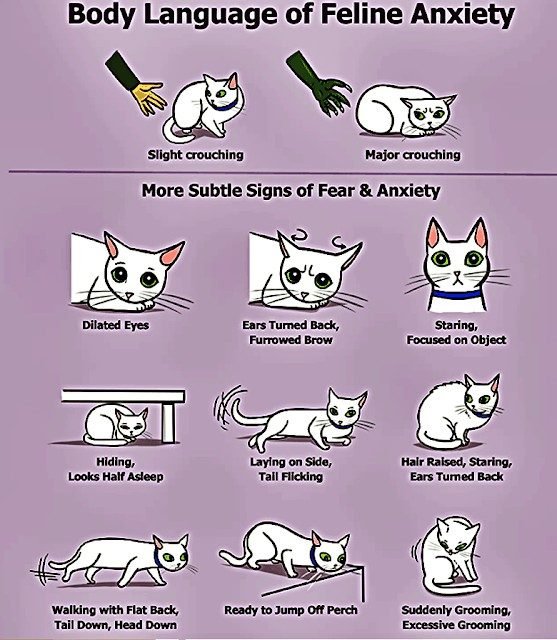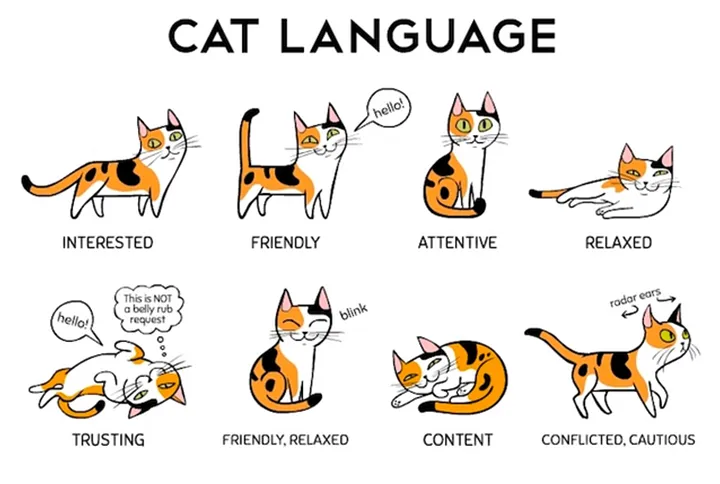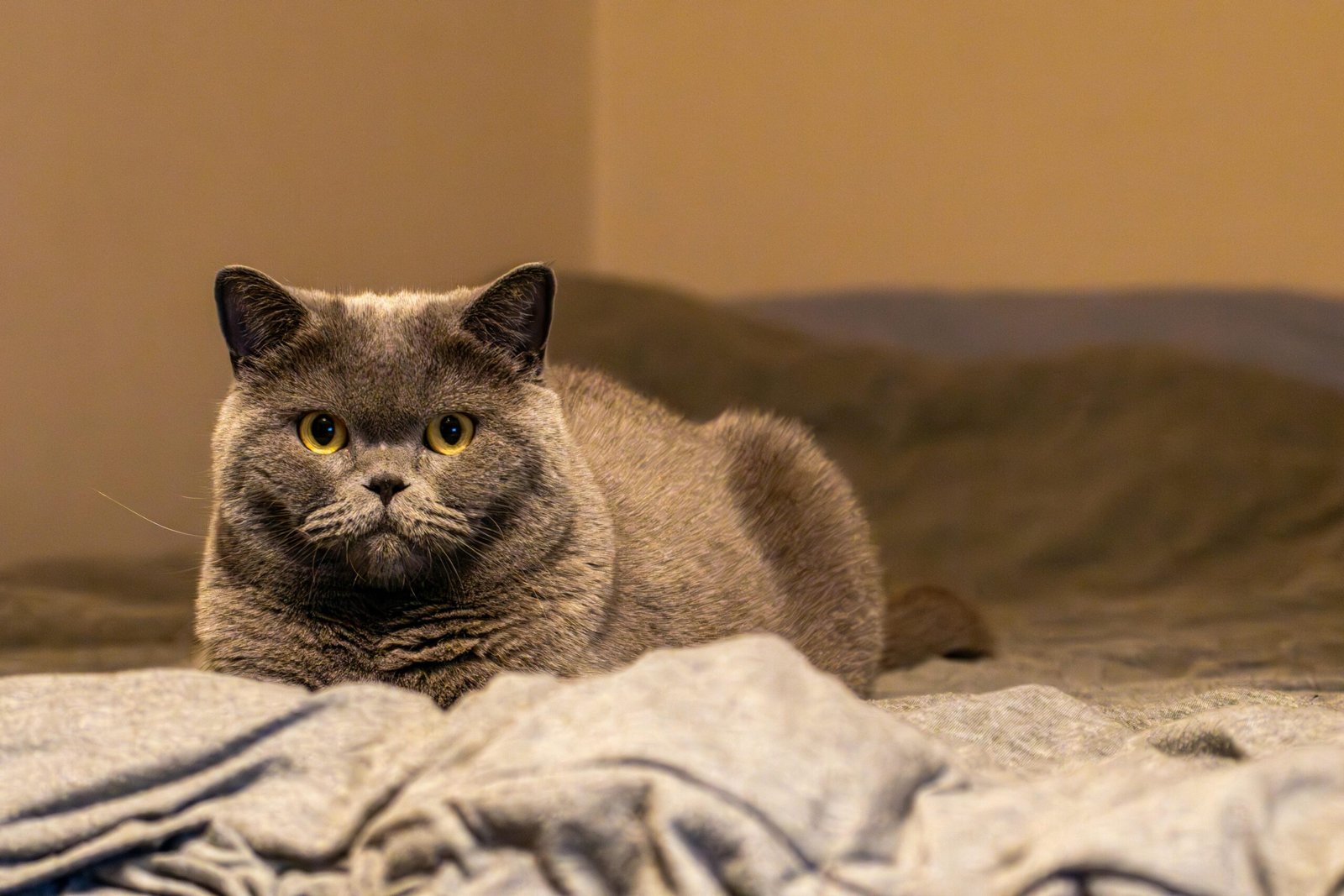Understanding Cat Behavior: Do They Know When They Misbehave? Last Updated on 22 Jan 2025, Care Kitties As cat owners we wonder …
Cat Talk Secrets: What Your Cat Is Really Saying
Cat talk plays a key role in developing a good relationship with your cat and considering its needs, which is critical for its well-being. If you can understand the specific ways cats interact with people, you can easily take better care of your cats. Cats have less facial expression compared to dogs, so it is often tough to understand what they want or assess their condition by looking at them. Cats use vocal-based signals and some other non-vocal signs and actions as a means of communicating with humans and other cats. Here’s a detailed guide to understanding these various forms of communication:
Cat Talk Through Vocalizations:
Vocalization is the first type of communication technique the cats use. There are various types of vocalisations we can hear from cats:
1. Meowing
Different types of meowing have different meanings. Most common meowing of cats and their meaning:
- Greeting Meow: An occasional, low-pitched sound means your cat is greeting you. This is commonly followed by the cat’s seemingly nonchalant attitude and half-shut eyelids.
- Demanding Meow: Any loud and constant meowing means that the cat wants something, for instance, to be let out, fed or pet. These sounds can range from gentle to loud, and the loud can be amplified if the requirement is not met immediately.
- Attention-Seeking Meow: Chattering calls that get louder most of the time signify a cat’s desire to be engaged in an act such as playing. These meows are normally in the middle pitch, and maybe during these, your cat will be following you or rubbing against you.
- Distress Meow: Some signs are changes in pitch and volume of the meows, especially if they are high-pitched or repeated; this shows that the cat is painful, scared, or uncomfortable. Such meows are usually loud and continuous, which means this signal should in one way or another warrant a response.
2. Purring
- Contentment Purr: If your cat is purring softly and rhythmically, this is a sign the animal is comfortable and content. This purring can occur when the object, be it the cat or another, is being stroked, is in a warm and comfortable location, or is curled up next to you.
- Healing Purr: Cats may purr when they are in pain or have certain health issues because purring may help them calm themselves. It tends to be louder and more prolonged in any case and is usually associated with other symptoms of discomfort, including shy, lethargic behavior.
3. Hissing and growling
4. Chirping and chattering
Frequently heard when a cat is stalking birds or some other small creatures, this call is thought to be a result of happy excitement and growing impatience. Chattering is the noisy grinding of the teeth that your cat will do while making an intense, focused stare.
Cat Talk Through Body Language: Decode Their Signals:
Body Language of the cats provides us with a variety of information about their needs. A few common body languages of cats are as follows:

1. Ears
- Forward: Your cat is alert and interested. This ear position is often seen when your cat is exploring, playing, or observing something of interest.
- Backward/Flat: This indicates fear, anxiety, or aggression. Flattened ears are a sign that your cat feels threatened and may be preparing to defend itself.
- Swiveling: The cat is attentive and listening to sounds around them. Rapid ear movements often occur when your cat is trying to pinpoint the source of a noise.
2. Eyes
- Slow Blinking: A sign of trust and affection. Try slow-blinking back to show you’re non-threatening. This behavior is sometimes called a “cat kiss” and is a good way to bond with your cat.
- Dilated Pupils: Can indicate excitement, fear, or surprise. Sudden dilation of the pupils often occurs during play or when your cat is startled.
- Narrowed Eyes: Usually a sign of contentment or relaxation, but can also mean the cat is feeling defensive. Pay attention to the context to determine whether your cat is feeling calm or cautious.
3. Tail
- Upright with a Curve: A friendly greeting. This tail position is often seen when your cat approaches you or another cat with positive intentions.
- Puffed Up: Indicates fear or aggression. A puffed-up tail is a defensive response designed to make the cat appear larger to potential threats.
- Low and Tucked: Shows submission or fear. A tail held low and close to the body indicates that your cat is feeling scared or submissive.
- Whipping Back and Forth: A sign of agitation or excitement. Rapid tail movements can indicate that your cat is irritated or highly stimulated.
4. Body Posture
- Arched Back with Fur Standing Up: Indicates a defensive or scared cat. This posture, often accompanied by hissing or growling, is meant to make the cat appear larger and more intimidating.
- Crouched with Tail Tucked: A sign of fear or submission. A crouched posture with a tucked tail indicates that your cat feels threatened and is trying to make itself as small as possible.
- Lying on Back with Belly Exposed: If relaxed, it’s a sign of trust. If tense, it could be a defensive posture. A relaxed cat may invite belly rubs, but a tense cat in this position is ready to defend itself with claws and teeth.
Cat Talk Through Behaviors: Understand Their Actions:
1. Rubbing and head-butting
2. Kneading
This is a common behavior known as ‘making biscuits,’ which is an indication that the little one is at ease with you. Cats knead in this manner because, when they were kittens, after they were born, they would knead on their mother’s tummy in an attempt to get her to produce milk. Cats who are well-settled and comfortable will also often paw the surface of where they lie.
3. Scratching
Cats scratch surfaces to claim ownership over an area, trim their nails, and exercise their pectoral muscles. This can be redirected by providing the right kind of scratching posts or boards that will make your furniture off-limit for this behavior. Licking also helps the cat wear off the outer layer of the claws
4. Licking and grooming
Grooming herself or you is a way of saying, ‘I love you’ or ‘Let’s be close’. Cats also bathe themselves in order to be clean and to minimize stress. This is quite normal, but if the grooming is excessive, then this is an indication of anxiety or medical matters.
5. Playful Behavior
Biting, swatting, and chasing are normal predatory and play activities. Meeting these needs can be done by giving toys to your cat, which will stimulate it intellectually. Playing with your cat using wand toys or laser pointers is also another way through which you can build a strong relationship with your cat.
Cat Talk: Recognizing Emotional States in Your Feline:
1. Happiness and contentment
Signs that your cat is happy include when the cat has a relaxed body posture, is always purring, sometimes even purring softly, is slowly blinking, and even when it is kneading the surface that it is lying on. Depending on the content, a cat may also have a half-closed-eye gaze and a smoothly swishing tail
2. Fear and anxiety

Some of the possible signs that a cat is scared or anxious include being out of sight, ears pinned back, large pupils, tense muscles, and heavy panting. Other signs can include overgrooming, vocalization or changes in vocalization, avoidance of the litterbox, etc. when stressed.
3. Aggression
Staring and standing low, hissing, growling, swatting with a paw, stiffening, and having a twitching tail are some of the indicators of aggression in a cat. One should allow them to be in this state because attempting to console them does not work as expected. There is a need to understand that aggression can be induced by either force, violation of space or pain.
4. Curiosity and playfulness
Drooping ears, an open mouth, big eyes, and the action of’swatting’ at things suggest playfulness. Some may also pounce at objects and other individuals, which is also related to their playfulness.
These were some general ideas about how cats communicate. But most importantly, you will need to spend time with your cat and observe its ways of communicating to understand what it wants. For example, I have six cats, I know exactly which cat wants what and at what time just by looking at them or hearing their voice. It is all the result of observation and spending time. If you do the same with your cat, you will slowly understand its needs and take care of it even better. This article will give you a very good head start on understanding cats’s communication techniques.
We hope you and your cat’s communication becomes much better from now on!!
Related Articles
Harness Training A Cat: An Eight-Step Guide Last Updated on 15 July 2024, Care Kitties Why harness training a cat is important …
Best Places to Bond With Your Cat Last Updated on 09 July 2024, Care Kitties It is necessary to take a perfect …
Top 11 Qualities that make you the Best Cat Parent Last Updated on 26 May 2024, Care Kitties Cats are adorable and …
Litter Training 101: Essentials for New and Experienced Cat Parents Last Updated on 20 May 2024, Care Kitties From birth, cats and …
Adopt, Don’t Shop: The Advantages of Pet Adoption Last Updated on 19 May 2024, Care Kitties We all want to have a …







